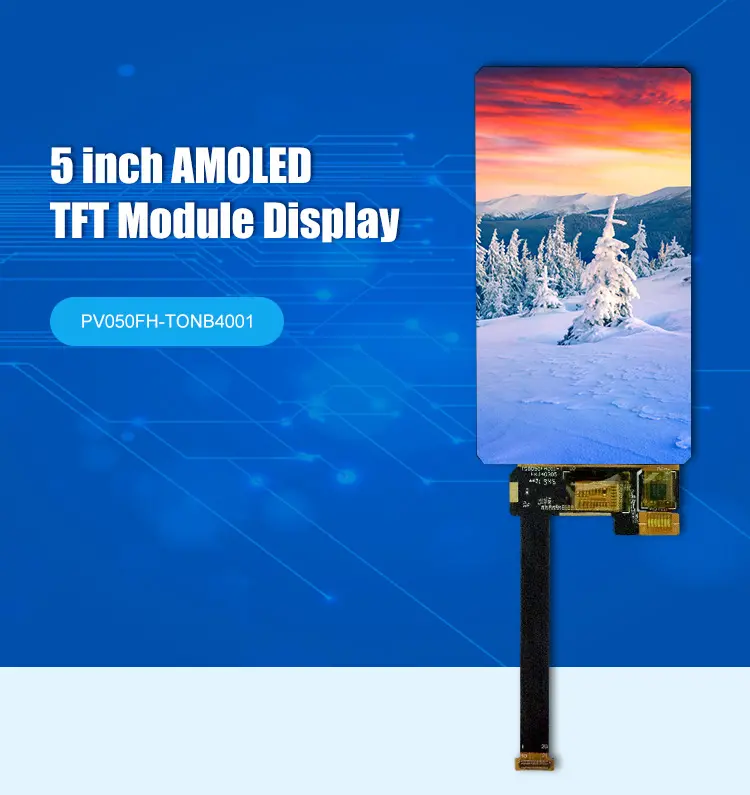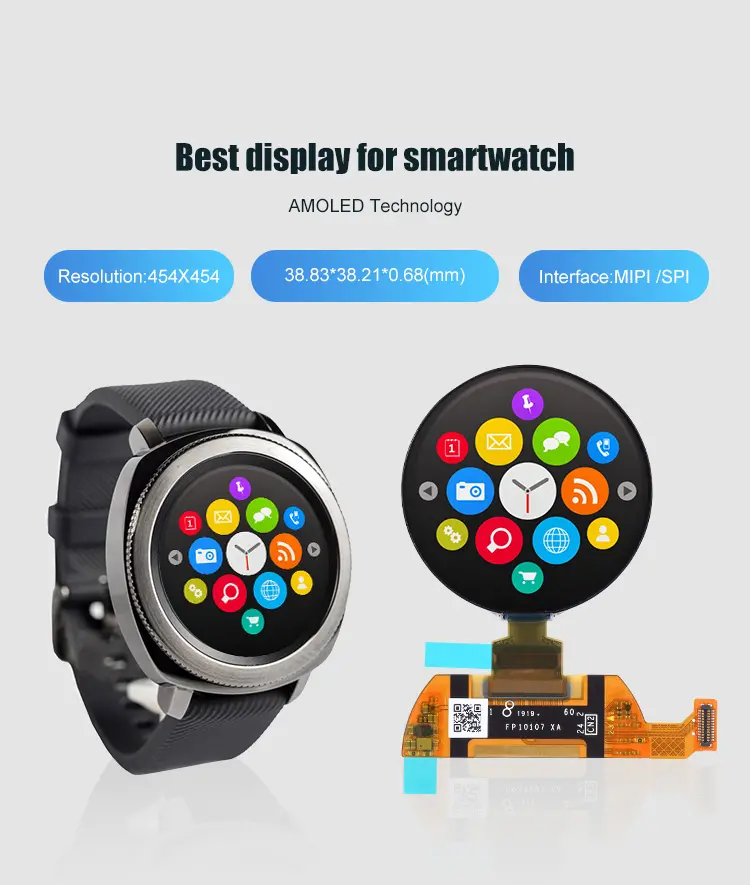It is not surprising that there have been so many incredible advancements in display technology over the past ten years, given the continued popularity of smartphones, computers, and television. One of the most recent inventions is amoled display. What is amoled display? To learn amoled, you must first have a basic understanding of OLED, LED, and TFT.
In traditional LED-LCD displays, the white LEDs on the inside are only used to back-light an LCD panel on the front, which is responsible for creating the colors and adjusting the brightness. What you see will therefore be contingent on the LEDs’ relative intensity and the LCD screen’s light-modifying properties.
In contrast to traditional LEDs, organic light-emitting diodes (OLEDs) can illuminate individual pixels in a display and allow for precise control over their color temperature by using a different semi-conductive substance, modifying the luminance of individual display pixels (or, absent any power at all, fully “black”). The result is extraordinary contrast ratios and fine-grained control over light and color without needing an LCD panel.
But for larger televisions, monitors, and laptop displays, amoled display enhances basic OLED technology by adding a Thin Film Transistor (TFT) layer that gives users more control over the light the OLEDs generate.

What is Amoled Display?
The amoled (active-matrix organic light-emitting diode) display is an OLED device. In OLED displays, the electroluminescence material is an organic compound, and the pixel addressing method is called active matrix. To put it simply, an amoled display is an OLED screen with certain extra features added in.
The usage of amoled in extremely large displays is prevalent. However, it is more challenging to transfer energy throughout the entire length of a large display. TFT enables swift energy transfer over very wide displays, allowing for fast refresh rates from edge to edge.

Benefits of A moled Display
The development of the larger, palm-sized phone screens we are familiar with was greatly helped by the commonly quoted benefits of amoled displays, which include pixel-by-pixel operation, brighter colors (and deeper, nearly perfect blacks), the ability to use less power, the ability to be thinner and lighter than conventional LED models. Also, laptop makers have responded with new, high-resolution amoled-based models as consumer demand for the technology has increased.
Disadvantages of A moled Display
amoled panels are thought to have a few disadvantages despite their rising popularity. amoled is only used in high-end laptops since it is still more expensive to produce large amoled screens than standard LED-LCD ones (for now). However, Device manufacturers claim that the cost will decrease with time. Another disadvantage of direct pixel-by-pixel illumination is that as some OLEDs are used more frequently and perform worse over time, this leads to a burn-in effect where common, extremely bright screen features, such as navigation bars, never completely vanish. Many manufacturers of amoled displays are developing technologies to automatically reduce screen portions when long-lasting brightness is detected to protect against this.

Conclusion
It is simple to understand why amoled displays are quickly edging into the possibly larger laptop and PC monitor sectors in addition to the amoled phone industry due to their better color accuracy and brightness. In addition, the amoled display is better for your eyes than other laptop displays since it emits less blue light. KINGTECH is a professional screen manufacturer that has been working since 2003. You are invited to contact us anytime if you have an amoled request.
